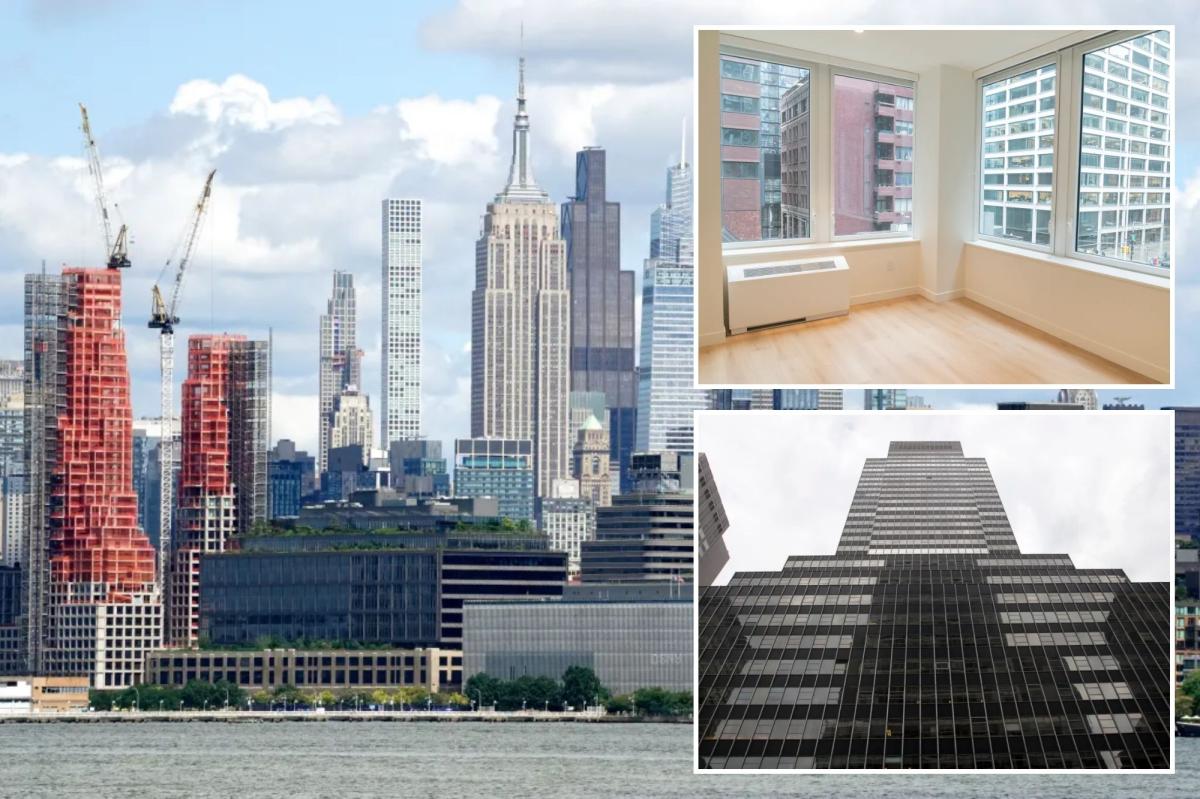One major Manhattan neighborhood’s skyline is being reused — rather than reshaped — by an office-to-residential conversion boom.
Adaptive reuse is reaching record highs across the country, but nowhere is the trend more pronounced than in New York City. Midtown, in particular, is expecting a windfall from the trend.
Just as redevelopment gave the buttoned-up Financial District a more family-friendly feel, all eyes are on whether Midtown’s conversion trend will add new energy — and desirability — to the area’s 9-to-5 and touristy reputation.
Roughly half of the city’s upcoming conversions are located in Midtown. Christopher Sadowski
Weaker demand and declining property values opened the door for more office conversions. Getty Images
A report by RentCafe singled out the Big Apple as the country’s No. 1 hotspot for upcoming office-to-residential conversions.
The pipeline of adaptive-reuse projects in the city includes nearly 11,000 apartments in various stages of development; roughly 9,000 of them are coming from former office buildings.
Weak demand and declining prices for aging office buildings made these vacant towers attractive to residential developers. Subsequent zoning changes and new housing incentives helped make the conversion boom possible.
There were 1.4 million square feet of conversion projects underway or planned in Manhattan as of September, Bloomberg reported, citing CBRE. That’s the equivalent of more than four Empire State buildings.
The old Pfizer headquarters located at 219 and 235 42nd St. (pictured) are being converted to residences. Seth Gottfried
A residential conversion of 5 Times Square was announced this year. Google Maps
The conversion of 750 Third Ave. is expected to yield 600 apartments. Imogen Brown
The expected injection of new housing thanks to this “conversion mania” is welcome news to the many New Yorkers who have contended with record-high rents over the past few years.
About half of the city’s upcoming conversions are located in Midtown — Manhattan’s least residential area. A housing boost here wouldn’t just add supply — it could reduce strain on the city’s public transit system as daily commuters become full-time residents.
The area’s expected windfall of converted housing includes buzzy projects like the redevelopment of the former Pfizer headquarters on East 42nd Street.
The two office towers near Grand Central — currently the largest office conversion in the US — are expected to yield roughly 1,600 new rentals when they open in 2026.
At 5 Times Square, along Midtown’s busiest corridor, the former home of Ernst & Young is slated for 1,250 new homes. These office-to-residential conversions have found popularity among two oft-opposing groups — ambitious residential developers and housing advocates.
When news of the 5 Times Square conversion was shared on the Reddit thread r/nyc earlier this year, the top comment declared: “This is good news, now do it 100 more times!”
Mayor Eric Adams touring the 160 Water St. conversion in 2023. G.N.Miller/NYPost
The footprint of apartments like this one once hosted office cubles. Pacific Press/LightRocket via Getty Images
Pearl House at 160 Water St. is the city’s largest post-pandemic office conversion project. Tamara Beckwith
The 35-story tower at 750 Third Ave. in Midtown East is turning into more than 600 apartments, and even the former Archdiocese of New York at 1011 First Ave. is getting a residential revamp.
This wealth of upcoming units is in contrast to 2024, when just 588 new apartments were added to the borough via conversion.
That was thanks to the transformation of the 1970s Fidi office tower at 160 Water St., which was rechristened Pearl House earlier this year when it became the city’s largest post-pandemic office conversion project.
So far, a majority of the city’s splashiest conversions have been concentrated in the lower Financial District, with developments like 25 Water St., the former JPMorgan Chase Building, and 55 Broad St., which opened its doors in 2024.
